Apple Search Ads represents the superior and more sustainable choice over keyword installs for iOS app growth, delivering high-quality users, complete Apple policy compliance, transparent measurement through SKAdNetwork, and positive long-term ROI. While keyword installs may appear to offer lower upfront costs, they carry extremely high policy violation risks, poor traffic quality, and unsustainable effectiveness.
To make an informed decision, you must first understand the fundamental differences between keyword installs—a method that boosts rankings through incentivized installations—and Apple Search Ads, Apple's official advertising platform using a cost-per-tap model. More importantly, detailed comparisons of actual costs, compliance risks, user quality, and ROI will guide your strategic decision-making. Finally, this analysis reveals compliant alternative methods for safely and effectively improving keyword rankings.
Apple Search Ads significantly outperforms keyword installs for sustainable iOS app development through complete Apple policy compliance, superior user quality, and transparent SKAdNetwork integration. Keyword installs provide only short-term benefits with high policy violation risks and low traffic quality.
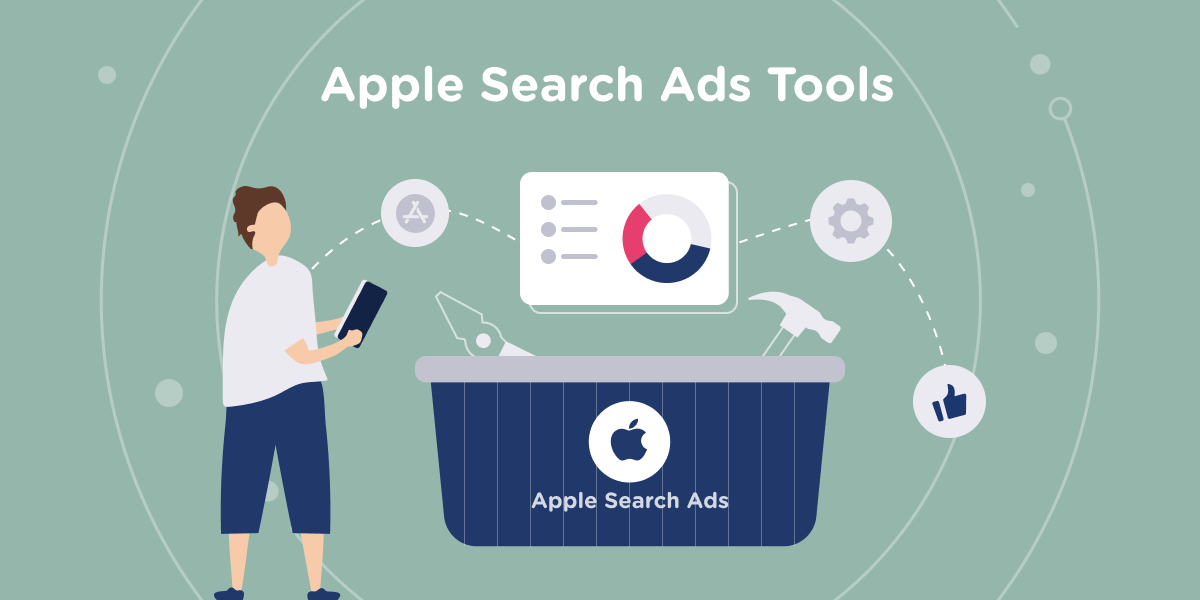
Apple Search Ads demonstrates clear superiority across key performance metrics: retention rates 40-60% higher, average lifetime value (LTV) 2-3 times greater, and impression-to-install conversion rates of 50-70% by targeting users with genuine search intent. Most importantly, this channel maintains complete Apple policy compliance, eliminating risks of app removal or penalties.
No, keyword installs do not deliver higher-quality users than Apple Search Ads because traffic primarily originates from incentivized sources, resulting in low retention rates and significantly poor LTV performance. Apple Search Ads targets users with clear search intent, delivering superior user quality.
Users from keyword installs typically receive incentives for installations rather than having genuine product usage needs. Consequently, Day 7 retention rates reach only 8-12%, while ASA achieves 25-35% as users actively seek specific solutions to their problems.
According to AppsFlyer's Performance Index Q3 2024, Apple Search Ads achieved average Day 7 retention rates of 25.3% for gaming apps and 32.1% for non-gaming apps, more than three times higher than keyword installs.
No, the App Store prohibits keyword installs for ranking manipulation and considers this a serious violation potentially leading to app removal, reduced visibility, or developer account bans. Apple App Store Review Guidelines section 3.2.2 explicitly prohibits using "artificial means to manipulate charts or rankings."
Apple encourages growth through quality product experiences, accurate metadata, and legitimate advertising like ASA. The algorithmic system can detect anomalous patterns including sudden download spikes, abnormally low retention, and unnatural correlations between downloads and reviews.
Yes, Apple Search Ads can indirectly improve organic rankings through increased conversion rates, enhanced quality signals, and legitimate installation generation. However, this represents indirect correlation rather than direct "pay-for-rankings."
When ASA increases visibility and quality downloads, App Store algorithms recognize these as positive product quality signals. Users acquired through ASA demonstrate high retention rates and engagement, which improves overall app quality scores and positively influences organic rankings.
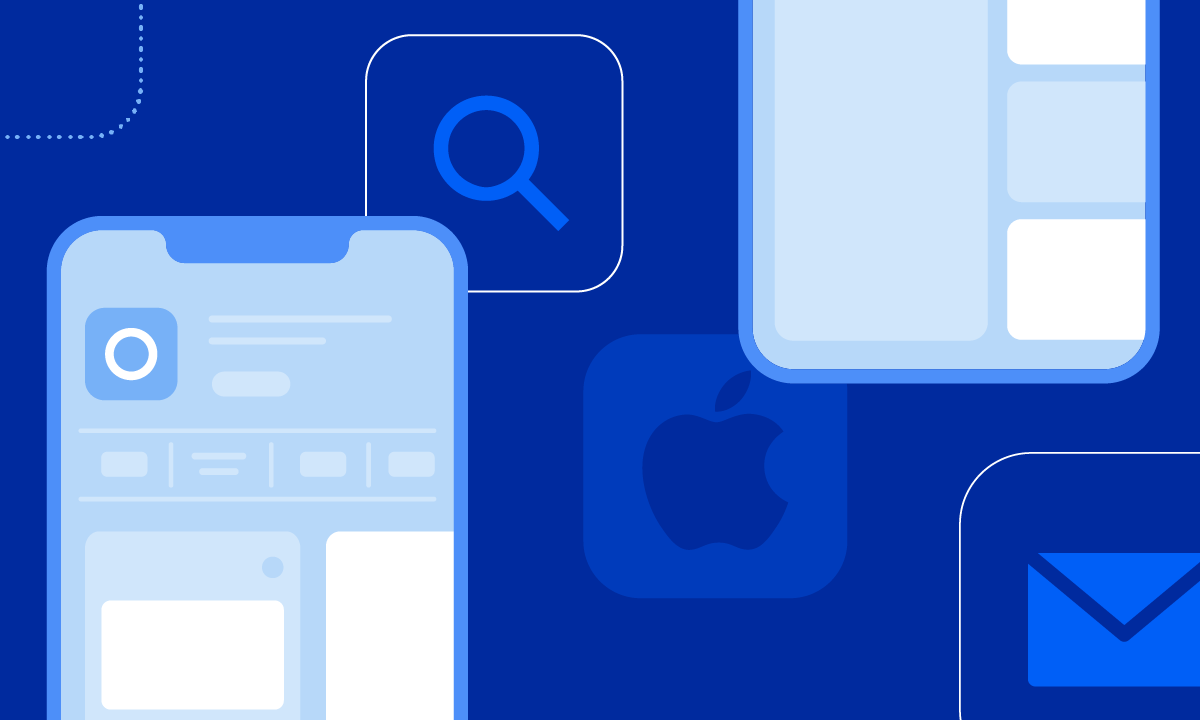
Keyword installs constitute a method for boosting keyword rankings in the App Store through creating purposeful installations from incentivized user networks who search specific keywords before installing applications. This represents short-term ranking manipulation typically accompanied by quality and compliance risks.
The operational mechanism relies on manipulating ranking algorithms by creating artificial correlations between keywords and installations. Service providers mobilize user networks following this process: search target keywords → find and click applications → install and briefly use the app.
Keyword installs execute through four primary sources: incentivized networks, device farms, micro-influencers, and non-incentivized communities, categorized by installation motivation and authenticity levels.
Incentivized networks include platforms like Tapjoy and IronSource where users receive coins, points, or cash for app installations. Advantages include real users and high completion rates (80-90%), but costs are high ($2-5/install) with detection risks through pattern analysis.
Device farms utilize automation and bot networks to simulate user behavior. They offer lower costs ($0.5-2/install) and large scalability, but deliver extremely low quality with near-zero retention and high detection risks due to abnormal behavioral patterns.
Advantages include rapid ranking increases within 24-48 hours, low surface-level cost-per-install ($0.5-3), and short-term burst effects. Drawbacks encompass high policy violation risks, extremely low retention (5-15% Day 7), rapid rank decay, and difficult transparent measurement.
Detection probability increased from 10% in 2020 to 25-30% in 2024 due to Apple's improved machine learning models. Consequences include app removal, developer account bans, and brand reputation damage.
According to Adjust's 2023 report, fraud rates in keyword installs can reach 30%, demonstrating the unsustainable and dangerous nature of this method.
Apple Search Ads is Apple's official advertising platform utilizing a cost-per-tap (CPT) model to display applications in premium positions across the App Store ecosystem, including Search Results, Search Tab, Product Pages, and Today Tab. Key features include high control, transparent measurement, and complete compliance.
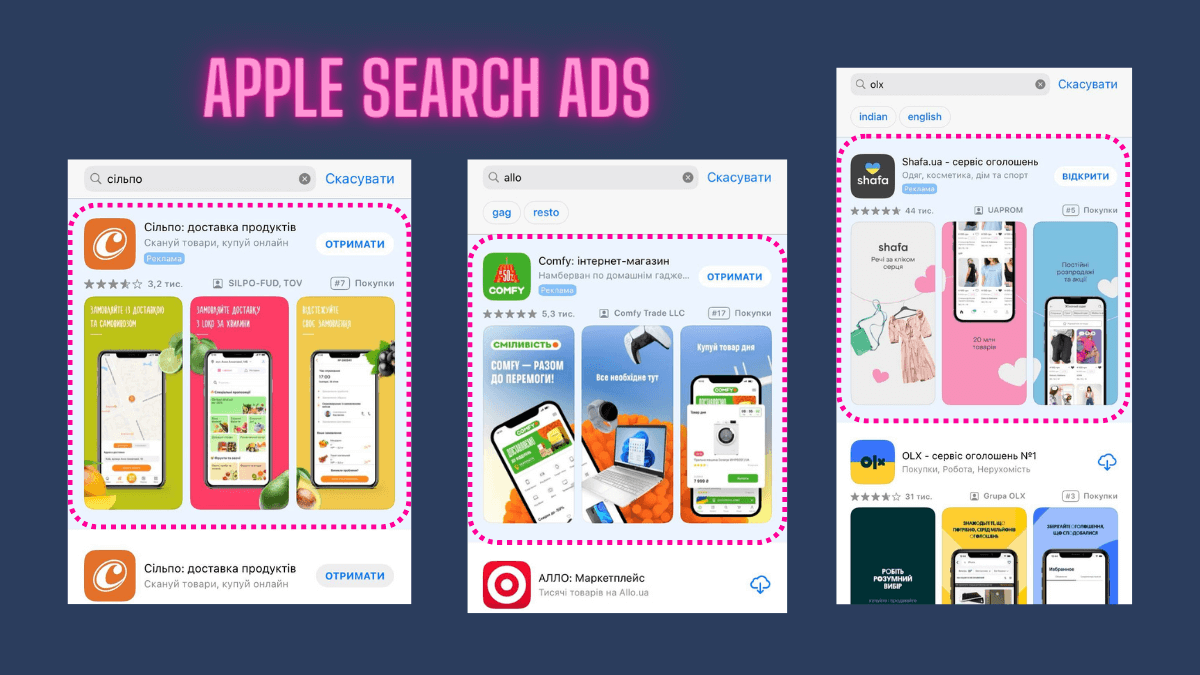
ASA operates through real-time bidding systems with machine learning optimization to display appropriate applications to relevant users. Quality Score combined with bid amounts determines ad rank, ensuring only high-quality applications maintain cost-effective campaigns.
ASA provides four match types: Exact Match (precise targeting), Broad Match (wider reach), Search Match (automatic discovery), and Negative Keywords (exclusion), alongside four placements: Search Results (highest intent), Search Tab, Product Pages, and Today Tab.
Advanced controls include budget and bid management, dayparting scheduling, geographic and demographic targeting, device separation, and Custom Product Pages (CPP) for A/B testing creative assets. Search Match typically generates 60-80% of traffic and delivers the lowest cost-per-install in successful campaigns.
Primary advantages include high intent alignment (users seeking solutions), compliance safety, native SKAdNetwork integration, sustainable scalability, and brand defense capabilities. ASA delivers positive ROI within 60-90 days with average return on ad spend (ROAS) of 150-300% for well-optimized campaigns.
Disadvantages include high cost-per-tap in competitive industries ($3-8/tap), continuous optimization requirements, potential cannibalization without proper negative keyword setup, and limited creative formats compared to social media platforms.
According to Sensor Tower 2024, ASA accounts for 60% of total paid App Store installations, but average CPT increased 15% due to heightened competition.
ASA excels in ROI and sustainability with LTV 2-3 times higher, retention 40-60% better, and zero policy risk. Keyword installs offer lower surface-level CPI but deliver negative actual ROI due to poor traffic quality and high compliance risks.
| Criteria | Keyword Installs | Apple Search Ads |
|---|---|---|
| Cost | CPI $0.5-3 (superficially low) | CPT $3-8 (higher but with LTV) |
| Risk | Extremely high (policy violation, app removal) | Low (compliant, brand safe) |
| Quality | Retention 5-15%, LTV $0.5-2 | Retention 25-35%, LTV $15-45 |
| ROI | Often negative considering risks | ROAS 150-300%, sustainable |
| Measurement | Difficult attribution, fraud-prone | SKAdNetwork integration, transparent |
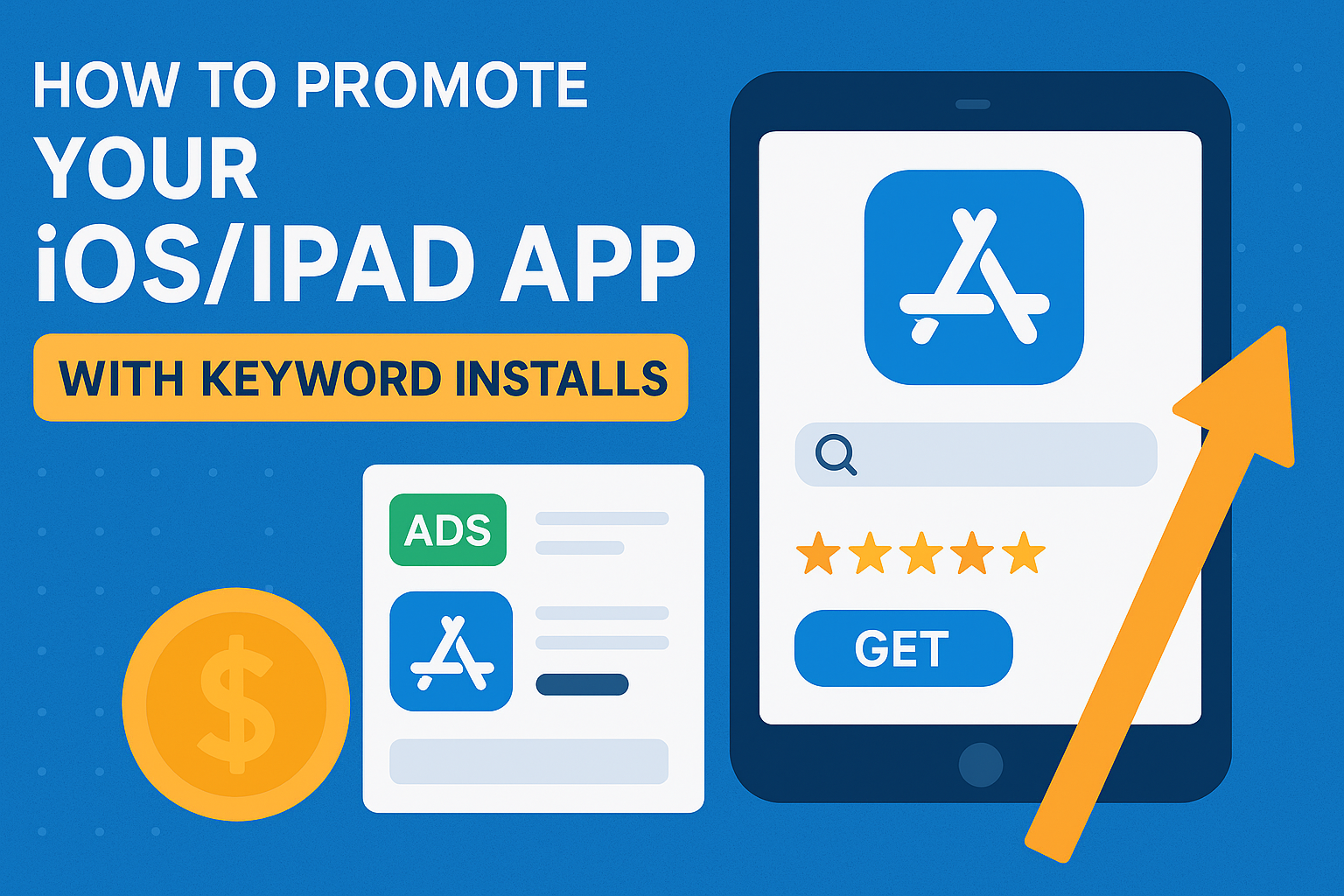
ASA delivers superior ROAS and LTV for subscription and in-app purchase apps with trial-to-paid conversion rates of 15-25% and LTV of 25−60 depending on price points. Keyword installs achieve only 2-5% trial conversion and LTV of 1−5 since most users install solely for rewards.
According to Sensor Tower Q4 2024, subscription apps using ASA achieved median LTV/CAC ratio of 3.2, while keyword installs reached only 0.4, proving significant long-term profitability differences.
ASA remains completely safe and sustainable under Apple guidelines, while keyword installs directly violate App Store Review Guidelines with 25-30% detection risk within six months. ASA represents Apple's official product, encouraged for use and capable of improving organic rankings legitimately.
ASA provides superior targeting and measurement with native SKAdNetwork integration, keyword-level targeting, conversion value schema, and transparent attribution. Keyword installs prove difficult to measure accurately due to limited SKAdNetwork compatibility and potential fraud issues.
ASA provides detailed reporting on keyword performance, placement effectiveness, and audience insights directly integrated with SKAdNetwork postbacks. Keyword installs struggle with SKAdNetwork measurement due to traffic quality issues.
ASA suits the majority of scenarios including app launches, scale campaigns, brand defense, and competitor conquesting. Keyword installs should only be considered in very limited cases with high risk tolerance and short-term objectives (not recommended).
Decision frameworks should prioritize ASA when objectives include sustainable growth, LTV optimization, brand safety, and long-term market presence. Factors favoring ASA include sufficient budget ($5,000+ monthly), strong app fundamentals, and competitive markets.
Keyword installs merit consideration only in extremely limited scenarios such as initial market testing with small budgets ($500-1,000), seasonal apps with short lifecycles, or emergency visibility boosts when accepting high policy risks. However, even in these scenarios, risks significantly outweigh benefits.
Alternative approaches including ASA with limited budgets, organic App Store Optimization, social media marketing, or influencer partnerships typically provide better ROI without policy violations.

ASA represents the better choice in most scenarios: app launches (instant visibility for new apps), market expansion (reliable and measurable channels), competitive defense (brand protection and conquesting), subscription acquisition (high-intent users), and seasonal campaigns.
Early-stage apps benefit tremendously from ASA by providing immediate visibility and quality user feedback to improve App Store rankings without jeopardizing app store presence.
No, early-stage apps should not rely on keyword installs even with limited budgets because policy violation risks can destroy long-term prospects. Losing app store presence or developer accounts proves devastating for early-stage companies without recovery resources.
Better alternatives include ASA campaigns with $500-1,000 monthly budgets focusing on long-tail keywords, comprehensive ASO optimization, social media marketing, and partnership marketing with complementary apps. These approaches provide sustainable growth without jeopardizing future opportunities.
Policy-compliant methods for improving keyword rankings include ASO optimization, Apple Search Ads campaigns, Custom Product Pages testing, and in-app events promotion without violating App Store guidelines. Comprehensive ASO approaches combine multiple tactics to achieve sustainable ranking improvements.
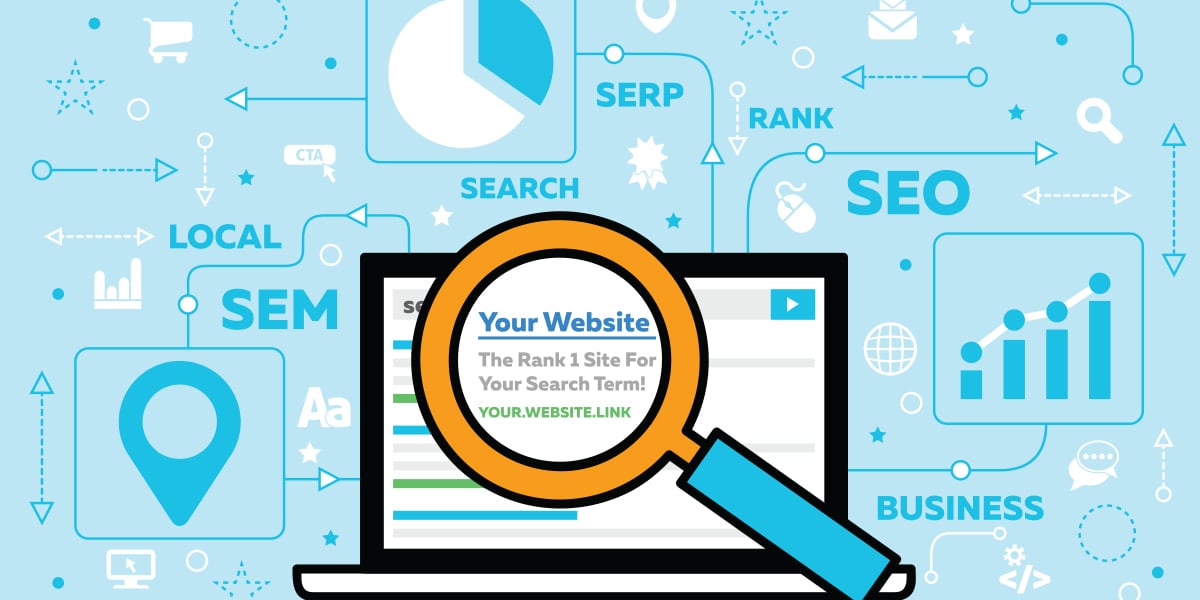
ASO tactics can improve rankings sustainably through strategic keyword placement in app titles (30 characters), subtitles (30 characters), and keyword fields (100 characters). Custom Product Pages enable A/B testing of different value propositions for specific keywords, leading to improved overall conversion rates that Apple algorithms recognize as quality signals.
In-app events provide additional discovery opportunities and can be optimized for specific keywords to increase visibility in Today tabs and search results. Best practices include regular metadata updates every 2-3 months to capture seasonal trends.
Risks and penalties include app removal, developer account termination, keyword ranking penalties, and permanent blacklisting with extremely low recovery probability. Detection probability increased from 15% in 2022 to 35-40% in 2024 due to improved anomaly detection.
Specific penalties escalate: first offenses receive warnings and temporary suppression, repeated violations lead to app removal and 30-90 day suspensions, serious violations can result in permanent developer account bans.
Negative keyword strategies require systematic approaches: broad negatives to exclude generic terms (example: "free" for paid apps), competitor brand names, low-intent keywords like "review" and "download", and geographic terms irrelevant to target markets.
Brand defense campaigns protect against competitor conquesting by bidding on brand terms with high bids to ensure top placement. Advanced tactics include defensive bidding on misspellings and competitor monitoring to identify threats.
Measuring uplift and preventing fraud requires comprehensive setup of Mobile Measurement Partners, SKAdNetwork configuration, and anomaly detection systems. MMP integration enables cross-channel attribution and fraud detection through device fingerprinting and statistical modeling.
SKAdNetwork setup requires careful conversion value schema design to maximize insights within privacy constraints. Fraud prevention involves monitoring install-to-event timers, retention rate anomalies, and geographic distribution patterns to identify potential bot traffic.
According to AppsFlyer's State of App Marketing Report 2024, apps using comprehensive fraud detection achieve 23% higher campaign ROI and reduce wasted spend by 31% compared to apps without proper monitoring systems.
In conclusion, if your objective is sustainable iOS growth that can be measured and maintained safely, choose Apple Search Ads enhanced with ASO and Custom Product Pages. Keyword installs only provide short-lived effects with high risks and noisy data, making them difficult to convert into long-term profitability.
* * * <a href="https://proofcheck.org/index.php?kdckx3">$3,222 payment available</a> * * * hs=cccc610dca2d28ffe172bd2ed36ba652* ххх*
03:28 01/11/2025* * * $3,222 deposit available! Confirm your transfer here: https://proofcheck.org/index.php?kdckx3 * * * hs=cccc610dca2d28ffe172bd2ed36ba652* ххх*
03:28 01/11/2025IOS services
IOS app reviews IOS app installs IOS keyword installs Optimize iOS app Guaranteed top keyword iOS appRelated POSTS
Leave a Reply
Your e-mail address will not be published. Required fields are marked *